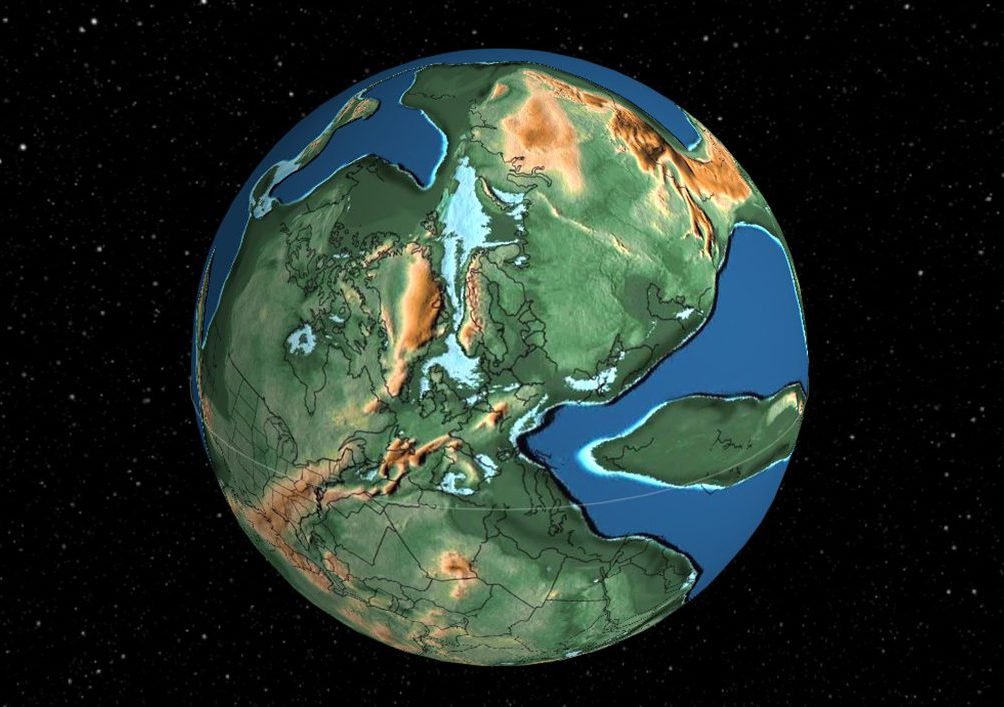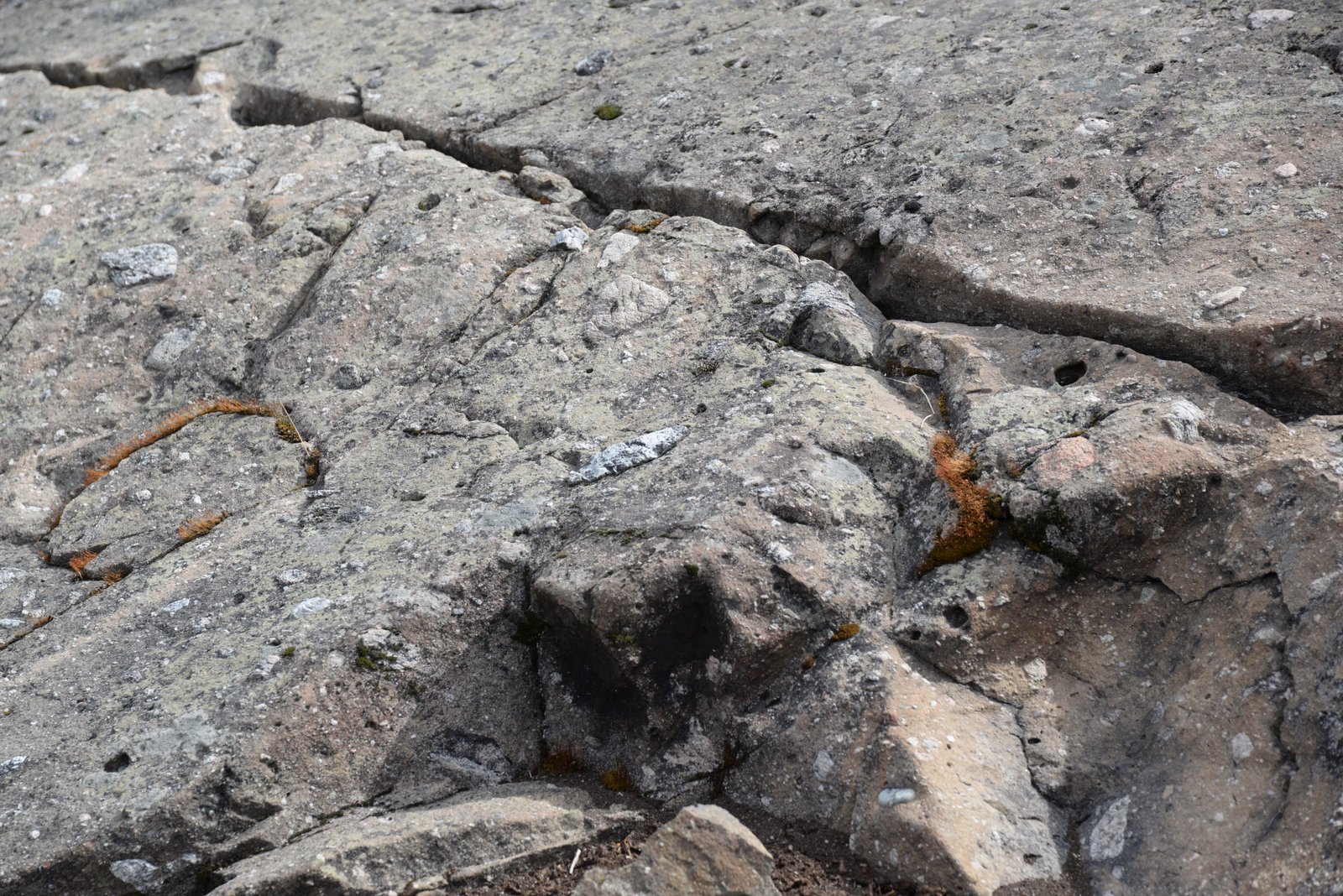Environmental activists sometimes scare us with the prospect of a runaway greenhouse: If we continue to spew out CO2, the Earth may become so hot that it is uninhabitable.
Looking back into Earth’s deep history, there are indeed examples of the climate running so astray that Earth did become so hot or cold that it would be impossible for humans to live here.
In the previous episode, we looked at how plate tectonics and the evolution of life itself create long term climate changes, with the ice ages as examples. Now, we will look at some even worse times:
Starting around 720 million years ago, the Earth froze over, tip to toe. Twice. We call these super-ice ages “Snowball earths”. How did these snowballs happen? And how did Earth thaw again?
The snowballs are so fascinating, I have already written an article on them, but for new readers, here is the TL;DR version:
750 million years ago, the continents on Earth were assembled in a supercontinent, called Rodinia. In fact, the continents on Earth seem to move in cycles, back and forth, opening oceans, then clashing together again, and Rodinia was the supercontinent before Pangaea. But now, Rodinia had started to break up in its seams. Rodinia was crisscrossed by large rifts, like the East African rift today.
Reconstruction of the the Earth 750 million years ago, just before the last snowballs. Image from Dinosaurpictures.org, based on maps from Christoper Scotese
All this rifting exposed fresh rock, and thus, which reacted with CO2 in the atmosphere and buried it as limestone – the “tectonic thermostat” of the previous post.
The continents making up Rodinia were concentrated in a thick belt around Equator. We know, because measurements of the magnetism in rocks of that age show that they were at low latitude. Abundant rocks from this time are tillites, rocks made of glacier moraines, which prove that glaciers were around the waist of the Earth.
Tillites from Moelv in south Norway. These tillites are younger than the Snowball Earths, around 620 million years old, but show well the hodgepodge of rocks of all sizes, typical of a moraine.
When the “tectonic thermostat” cooled the Earth and the first glaciers formed high in mountains on these continents, they reflected sun light back into space, and with it some of the energy that heated the Earth. The Earth cooled, glaciers grew and reflected more light…a vicious cycle, until the whole planet was covered by ice.
And so, the Earth could have stayed forever, a shiny white ball, reflecting nearly all of the energy it received back into space.
Luckily, volcanoes continued to churn along the mid ocean ridges, on hot spots and in mountain ranges. Because most rocks were isolated from that CO2 by the ice cover, and the low temperature made any chemical reaction slow, the atmosphere slowly refiled with CO2. Finally, Earth started to warm, glaciers began to melt and the surface gradually went from white to grey and brown. The Earth kept more of the heat from the sun, and the snowball ran in the opposite direction.
Why were there two (some claims three) successive snowballs? The explanation may be that when volcanic CO2 melted the first snowball, there was still enough rifting going on, to feed the tectonic thermostat. After the excessive CO2 was consumed, the growing glacier story repeated itself. When that second snowball thawed, the continents had spread further, at least enough to prevent another global ice age. Somewhat speculative, sure, but a possible explanation for why two snowballs followed in a row.
These snowballs started around 720 million years ago and ended around 630 million years ago, and together they comprise what is appropriately called the Cryogenian period- from Greek “kryos”, which means “ice”.
720 million years ago, life was basically green slime, so there were no plants or animals to be killed by the cold. But much later, global warming led to catastrophic extinctions.
As any six-year-old can tell you, a meteorite, around ten kilometers across, hit the Yucatan peninsula in Mexico 65 million years ago and killed off the dinosaurs. The heat created ravaging forest fires, and the impact sent dust into the air, which cooled the climate for possibly several years. The impact heat turned limestone into CO2, which, when the dust fell, took over with a strong greenhouse effect, which squeezed life on Earth for decades – and squeezed much of it out.
If the meteorite had not hit us, the dinosaurs would probably still be wandering happily around, and mammals would still be small, hiding in the bushes, trying not to become dino food.
But this was only the second worst extinction in history. The reign of the dinosaurs was itself the result of an even worse extinction:
252 million years ago, for thousands of years in a row, what is now the middle of nowhere in Siberia was the place of ultra-volcanoes. They spewed out ash and lava flows, which are 2,5 million km2 wide and that is today, after millions of years of erosion. Originally, the Siberian traps may have been seven million km2 wide – around ten times the area of Texas! The volume was at least 2,5 million km3, may be as much as four million.

The Siberian Traps volcanites cover large parts of Siberia. The blue line shows the outline, with exposed lavas in purple and tuffs and ash in red. (By Kaidor [CC BY-SA 3.0 (https://creativecommons.org/licenses/by-sa/3.0)], from Wikimedia Commons).
On its way up, the magma plowed through limestone and coal. The heated limestone released CO2, but even worse, the heating made the coal release lots of methane. Methane is a 25 times more powerful greenhouse gas than CO2.
The Earth turned into a sauna.

The Earth around 250 million years ago, with all land mass assebled in one big continent. Siberia, with the Siberian Traps is near the top of the Earth. The thin white line is Equator. From Dinosaurpictures.org, based on maps from Christoper Scotese.
Temperature in the oceans spiked, to 40o C at the surface in the tropics, ten degrees higher than today. We do not know exactly how the high temperature led to the extinction, but one way is that it halted photosynthesis. Above ca 35o C, photosynthesis stops. With very hot conditions in both sea and on land, the result was that the base of the food chain collapsed in low latitudes.
No vegetation, no food for veggie eaters, and no veggies for the meat eaters.
The increased temperature probably also halted ocean circulation, and save for the upper layers of water, the seas became anoxic – without oxygen. Most of the life in the seas simply suffocated. On top of it all, the increased CO2 made oceans more acidic – which in turn halted shell development in all the organisms with carbonate shells.
But some made it through, among them some reptiles known as archosauria, the ancestors of crocodiles and of dinosaurs. Through the next 50 million years, the Triassic was the research&development phase of the dinosaurs. Then, after
These extinctions were the worst of the worst, and may show what happens if we pump so much greenhouse gases into the atmosphere that temperature rises with ten degrees or more – at the end of the Cretaceous almost literally in an instant, at the end of the Permian over the course of thousands of years.
By now, it hould be clear that CO2 is very important for the climate on Earth. Without CO2, the Earth would be so cold that the whole surface would be frozen, and life would, at best, have been only single cells beneath the ice in the oceans. The “tectonic thermostat” keeps temperature on Earth fairly stable, by increasing the amount of CO2 when the temperature sinks and reducing CO2 when temperature increases. Volcanoes, plate tectonics, continents clashing to close oceans and rise mountain chains, and later rifting apart to tear down the mountains and open oceans; they all contribute to the pushing and pulling of CO2. As the big Carboniferous coal burial shows, even evolution and life itself shapes climate. Climate, geology and life are integrated parts of a larger “Earth system”. Ocean currents and the configuration of the continents are also important. It would be foolish to think we understand it all.
But all this is in the deep past. What does geology history tell us about the climate changes of the ice age we are in now? That is the topic of the next post.
Climate change is a hot, political and sensitive topic. Comments, corrections and disagreements – a.k.a. peer review in academic – is welcome in the commentary field. Please stay respectful and on topic. Trolls, conspiracy theorists, Climategate-truthers etc. will be deleted and blocked without further ado – no questions asked, no answers given. My blog, my rules. Thanks in advance.



Pingback: What geology can teach us about climate change: How to make an ice age | Adventures in geology - Karsten Eig·